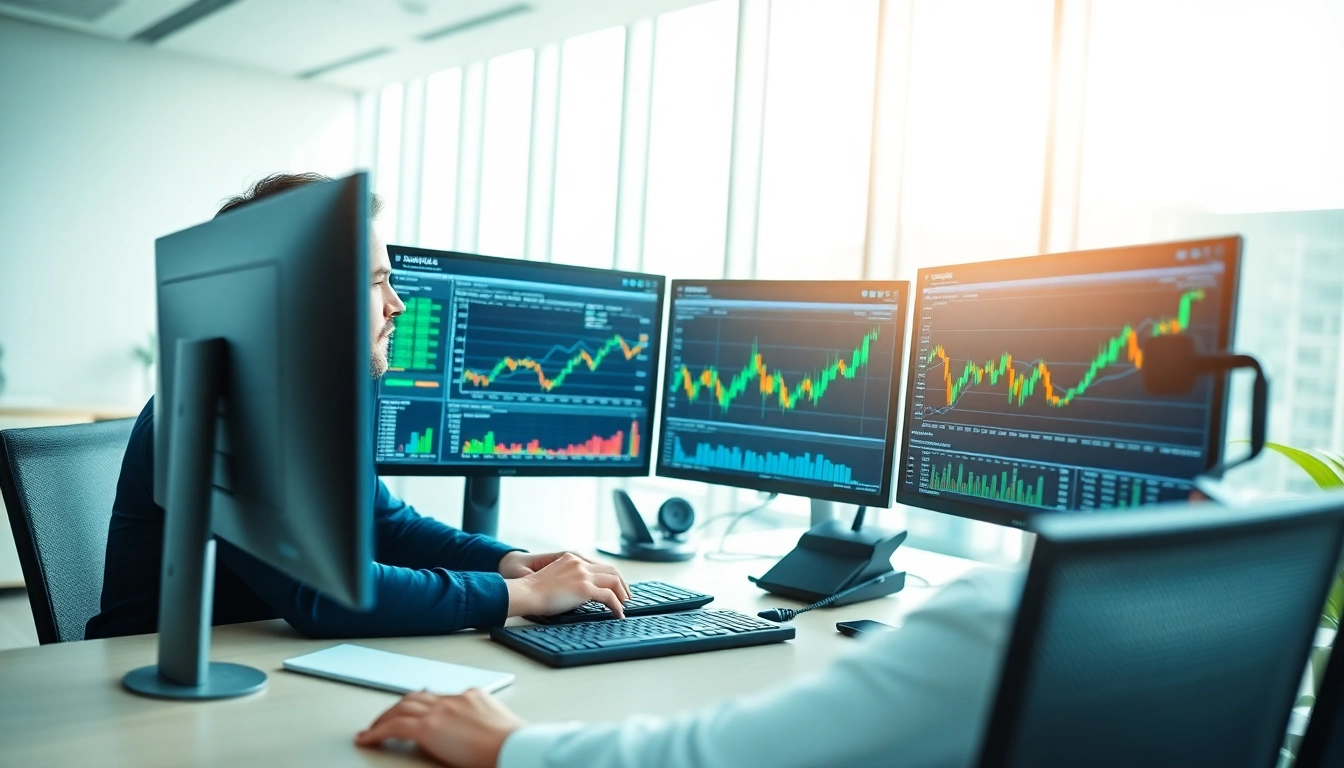Understanding Trade Futures
In an increasingly complex financial landscape, trade futures have become a prevalent choice for investors looking to manage risk, diversify portfolios, or speculate on price movements. This article delves into the intricacies of trade futures, exploring their mechanics, benefits, challenges, and strategies for success in this dynamic trading arena.
What Are Trade Futures?
Trade futures are standardized contracts that obligate the buyer to purchase, and the seller to sell, a commodity or financial instrument at a predetermined price at a specified future date. These contracts are traded on futures exchanges and cover a wide range of assets, including agricultural products, metals, energy, and financial instruments like stock indices and currencies. Futures contracts are essential tools for hedging against price fluctuations and utilizing leverage to amplify potential returns.
The Mechanics of Futures Trading
The trading of futures contracts involves several key components, such as the margin system, which allows traders to control a large position with a relatively small amount of capital. When entering a futures contract, traders are required to deposit a margin—an upfront payment that acts as collateral. This practice enables them to leverage their investments, offering both opportunities and risks. Furthermore, futures markets operate under strict regulations, providing a centralized platform for buyers and sellers, mitigating the risk of counterparty default.
Why Choose Trade Futures?
Investors choose trade futures for several reasons, including the ability to hedge against existing positions, benefit from price movements, and gain access to a wide array of asset classes. Futures trading can also provide high liquidity, enabling traders to enter and exit positions without significant price shifts. Additionally, futures markets often operate around the clock, providing ample opportunities in different time zones and reducing the impact of market inefficiencies.
Key Benefits of Trade Futures
Leverage and Margin Benefits
One of the most compelling benefits of trade futures lies in the leverage offered by margin trading. With margin, traders can control a larger position than the capital they initially invest, potentially magnifying returns. For example, if a trader puts down a margin of $1,000 on a futures contract worth $10,000, they have a 10:1 leverage. While this can lead to significant profits, it also poses a risk of substantial losses if the market moves against them.
Risk Management Through Hedging
Futures trading is a powerful risk management tool utilized by businesses and investors alike. By locking in prices for future transactions, companies can protect themselves from volatile fluctuations in commodity prices. For instance, a bakery might hedge against rising wheat prices by buying futures contracts. This practice allows them to budget accurately and maintain stable profit margins, thereby mitigating unexpected costs associated with price surges.
Diverse Market Opportunities
Futures trading offers a breadth of market opportunities across various asset classes. From agricultural commodities like corn and soybeans to financial futures such as S&P 500 and Eurodollars, traders can tailor their investments to sectors they believe will perform well. Additionally, the global nature of futures markets allows for participation in international markets and products, further enhancing diversification.
Common Challenges in Trade Futures
Market Volatility Risks
Despite the advantages of trade futures, they are not without challenges. Market volatility is a primary concern, as rapid price swings can lead to significant losses. Traders must be prepared for unexpected news, weather events, or geopolitical developments that can suddenly impact commodity prices. Managing these risks effectively is crucial for long-term trading success.
Understanding Market Indicators
Futures traders rely heavily on market indicators to inform their trading decisions. Key indicators include supply and demand stats, economic reports, and weather forecasts. However, misinterpreting these indicators can lead to poor decision-making and potential financial damage. As such, developing a nuanced understanding of these metrics is vital for traders looking to navigate the complexities of futures markets.
Emotional Trading Pitfalls
Emotional trading can significantly impede a trader’s success in the futures market. Fear, greed, and impatience can lead to impulsive decisions, resulting in unplanned trades or holding onto losing positions for too long. To combat emotional pitfalls, traders should implement strict risk management strategies and maintain discipline through trading plans that keep emotional responses in check.
Best Practices for Successful Futures Trading
Developing a Trading Strategy
A solid trading strategy is fundamental for success in trade futures. Traders should define their goals, risk tolerance, and time horizon. Whether opting for day trading or longer-term strategies, having a structured approach aids in making informed decisions and minimizing emotional trading. Traders can also back-test their strategies using historical data to gauge effectiveness before deploying real capital.
Utilizing Technical and Fundamental Analysis
Successful futures trading requires a blend of technical and fundamental analysis. Technical analysis involves analyzing price charts and identifying patterns, trends, and technical indicators that can signal potential trading opportunities. Conversely, fundamental analysis looks at macroeconomic factors that influence market movements, such as changes in supply and demand, economic indicators, and geopolitical events. Combining both analyses enhances a trader’s ability to make informed and objective trading decisions.
Staying Informed on Market Trends
In the fast-paced world of trade futures, staying informed about market trends is essential. This can include following news related to global economic conditions, regulatory changes, and technological advancements in trading platforms. Subscribing to market analysis newsletters, participating in trading forums, and attending webinars can provide valuable insights into current market dynamics.
Measuring Success in Trade Futures
Performance Metrics for Traders
Evaluating success in futures trading isn’t solely about profit; it involves analyzing several performance metrics. Common indicators include the win-loss ratio, return on investment (ROI), and risk-reward ratio. By closely monitoring these metrics, traders can assess their strategies’ effectiveness, identifying areas for improvement or adjustment.
Adjusting Strategies Based on Analytics
In trading, adaptability is paramount. Successful traders regularly review their performance analytics and make strategic adjustments as necessary. Factors such as market shifts, personal financial goals, and changes in risk tolerance should inform any alterations in trading strategy. Forward-thinking traders also consider back-testing previous strategies against new market conditions to enhance long-term success.
Long-Term Investment vs. Short-Term Gains
Traders face the continual dilemma of choosing between long-term investments and short-term gains. Long-term strategies can yield significant profits, but they require patience and a strong understanding of market fundamentals. On the other hand, short-term trading can produce rapid returns but involves heightened risks and increased transaction costs. Defining one’s trading objectives will help clarify the best approach to take and establish clear, achievable goals.



